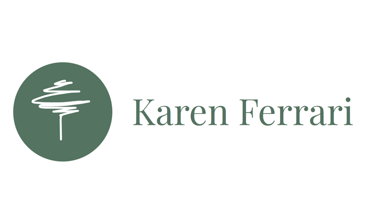The Garden Gap: Why Skipping Landscaping Costs More Than You Think
When you leave landscaping for last, you're not saving money — you're leaving value on the table.
Karen Ferrari
8/13/20252 min read
Imagine this scenario: You've spent months, maybe years, designing your dream home. The architecture is striking. The interiors are immaculate. Lighting, flooring, cabinetry — no expense spared. Then comes the garden. It's left for last. The budget is tight. “We’ll plant later,” you say. But in reality, you're cutting value.
In real estate, landscaping isn’t an accessory — it’s a strategy. And in today’s competitive market, ignoring it means leaving real money behind.
Landscaping by the Numbers
This isn’t opinion. It’s measurable.
According to the American Society of Landscape Architects, professional landscaping can increase property value by 15% to 20%.
Researchers at Virginia Tech found that well-landscaped homes have a price advantage of 5.5% to 12.7% over comparable properties.
A 2025 HomeLight survey of real estate agents reported that well-maintained yards and gardens can yield up to 267% return on investment (ROI).
Trees alone can add between $1,000 and $10,000 in perceived value and reduce cooling costs by up to 35%.
Features like outdoor kitchens or fire pits increase home value by 1% to 2.2% per element.
And the most overlooked stat:
Poor landscaping can reduce a home’s market value by as much as 30%, according to a 2025 Trees.com survey.
What the Data Tells Us
Landscaping is no longer just aesthetics. It’s economics.
Buyers form an opinion within seconds. In luxury markets, curb appeal starts the moment you approach. An unkempt garden signals neglect. A curated landscape communicates quality — before anyone even steps inside.
Many agents agree that landscaping is second only to location in influencing a buyer’s perception and price point.
So why is it still an afterthought?
The Smart Investor's Blind Spot
Homeowners allocate budgets carefully: brick, steel, glass, tile. But the surrounding land? It’s treated as a leftover. It goes like this:
Budget is allocated: 90% to build, 9% to interiors, 1% (or nothing) to exteriors.
Construction runs over. Interior upgrades snowball.
Landscaping gets postponed — or DIY’d.
Here’s the truth: a poorly executed garden can drag down a high-end property. A well-designed one? It can elevate a modest home into a dream property.
ROI You Can See from the Street
Let the numbers speak:
ROI by landscaping feature:
Lawn care: 267% ROI
Patio/deck: 89%–95% ROI
Irrigation system: 83% ROI
Outdoor lighting: 59% ROI
Fire pit: 56% ROI
Outdoor kitchen: 2.2% increase in home value
Landscaping vs. Other Renovations:
Kitchen remodel: 70%–80% ROI
Bathroom remodel: 60%–70% ROI
The takeaway? Landscaping can outperform interiors in raw profitability.
The Quiet Luxury of a Finished Garden
In markets where taste and restraint signal wealth more than extravagance, a thoughtfully executed landscape communicates effortless luxury. Think mature trees, native species, gravel paths, subtle lighting. It’s not loud. It’s flawless.
And the discerning buyer notices.
Conclusion: The Million-Dollar View No One Designed
The garden isn’t the finishing touch. It’s the first impression. It’s the frame to the architecture you’ve invested so much in. And it’s one of the few elements that delivers both emotional return and tangible value.
Landscaping isn’t the final detail. It’s the foundation of value.
So the next time you plan a build or a renovation, ask yourself:
Are you making space for the garden — or leaving money on the table?
+34 672 010 678
contacto@karenferraripaisajismo.com
© 2025 Karen Ferrari Paisajismo

